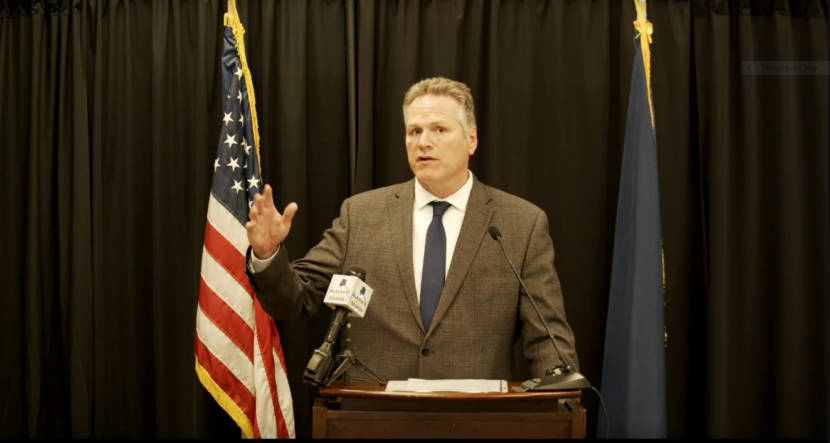
The portion of the Alaska Permanent Fund protected by the state constitution has grown by $4 billion. That’s the result of a transfer from the fund’s earnings reserve.
Gov. Mike Dunleavy said on Thursday he had stopped the $4 billion transfer from happening with a veto.
But his office failed to cross out the lines in the actual budget bill delivered back to the Legislature. So the transfer was not stopped.
The $4 billion transfer is roughly equal to what the state spends to operate all of state government.
[Sign up for Alaska Public Media’s daily newsletter to get our top stories delivered to your inbox.]
In explaining why he wanted to veto the money, Dunleavy had said he wanted to work with the Legislature on a comprehensive approach to the Permanent Fund, including the money in the earnings reserve.
But on page 138 of the budget bill, the line about the $4 billion transfer was not crossed out.
Legislators became aware of the issue late last week. Dunleavy tried to correct the error. He told Senate President Peter Micciche, R-Soldotna, and House Speaker Louise Stutes, R-Kodiak, that he intended to veto the transfer, but legislative staff weren’t prepared to make the change he was asking for.
RELATED: Dunleavy vetoes PFD funding from state budget, says dividends must be funded in special session
On Tuesday, the governor’s office said he will allow the transfer to go through, despite his intention to stop it.
It means that the amount of Permanent Fund money that’s protected under the state constitution — known as the “corpus” — has risen from just under $48 billion to nearly $52 billion. But that still leaves nearly $30 billion that’s either in the earnings reserve or is locked up in gains in investments like real estate that haven’t been realized yet.
On Aug. 2, the Legislature is scheduled to convene for the third special session this year.
Dunleavy has proposed a constitutional amendment that would protect the remaining amount in the earnings reserve. It also would put the Permanent Fund dividend in the constitution.
The size of PFDs that Dunleavy is proposing would be based on half of the amount drawn from the fund annually. Currently, that would mean a PFD of roughly $2,350.
But nonpartisan budget analysts estimate it would create annual budget deficits averaging $1 billion this decade, without other changes to policy.
Members of both legislative majorities praised the transfer of the $4 billion.
Rep. Ivy Spohnholz, D-Anchorage, said it was critical to protect the transferred funds, considering the state government’s history of spending from savings.
“I think, in the end, it came out the way it needed to come out — which is ensuring that another $4 billion is protected in the corpus of the Permanent Fund,” she said.
Sen. Bert Stedman, R-Sitka, said he’d like to look at protecting more of the Permanent Fund.
“My concern is that the Legislature will walk through the earnings reserve like a knife through hot butter,” he said. “And we need to protect it for current and future generations.”
Dunleavy spokesperson Corey Allen Young said the transfer won’t adversely affect the governor’s Permanent Fund proposal, which he said would “guarantee Alaskans receive their share of the state’s resource wealth each year and end the annual debate over the amount of the PFD.”
Andrew Kitchenman is the state government and politics reporter for Alaska Public Media and KTOO in Juneau. Reach him at akitchenman@alaskapublic.org.




